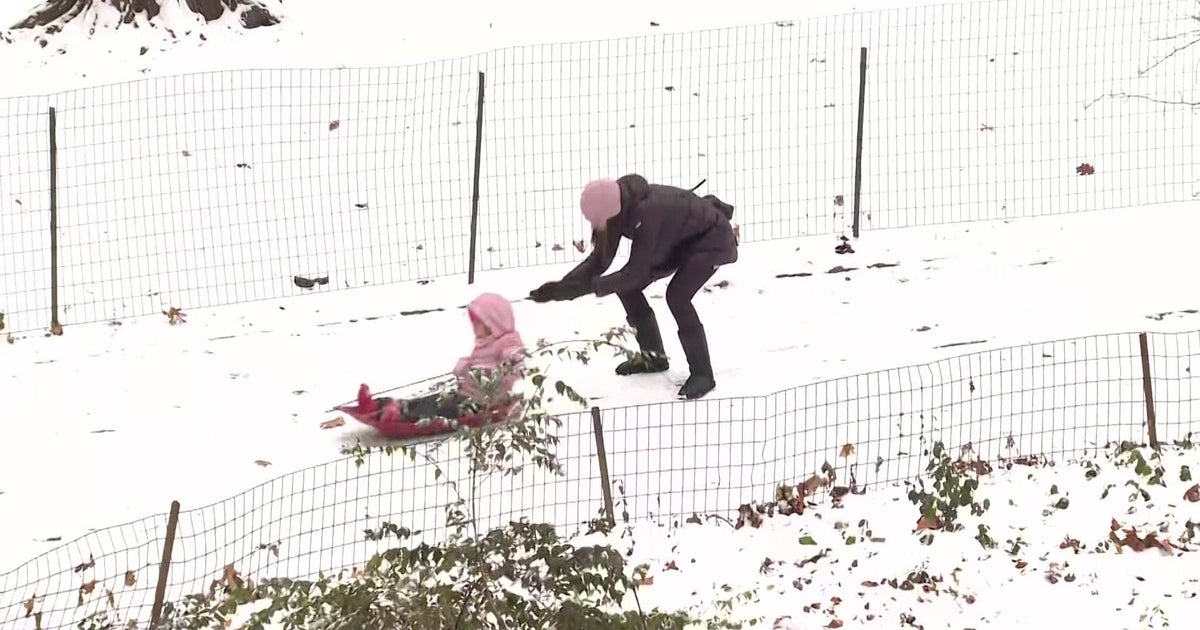Spring and storms: Combination of cold, warm air can create dramatic weather conditions
TRENTON, N.J. -- While many hope spring brings bright skies and milder temperatures, the combination of cold and warm air can create for some dramatic weather conditions.
As CBS2's Vanessa Murdock reports, one moment birds are chirping, bees are buzzing and it's in the 60s and sunny, then, seemingly within seconds, a strong cold front, the battle line drawn between warm and cold air, approaches. Skies turn dark, and if the atmosphere is stacked just so, storms rip through the region, threatening lives and property.
That was the case in May of 2019. Homes in Stanhope and Hopatcong were ripped apart, power poles slammed to the ground, cars crushed, sheds displaced and kids' playsets tossed like tinker toys. An EF1 tornado with winds up to 110 mph caused all the damage.
So where do you go when a tornado warning is issued?
If you have a basement, go there. If not, head to an interior room on the lowest level of your home. Always stay away from windows. If there's time, grab something like a mattress or blanket to better protect yourself.
One of the most significant spring severe weather outbreaks in recent years happened on May 15, 2018.
Five people died when two macrobursts caused major damage across New York's Lower Hudson Valley and Connecticut. Those macrobursts produced winds up 110 mph, downing trees in a moment.
Five tornadoes touched down, too. The worst of the damage was concentrated north and due west of New York City, which is often the case early in spring. The Atlantic limits intensity.
"Our ocean is still very cold. So the ocean plays a large part ... the amount of energy that we may have for thunderstorms," said Nelson Vaz, warning coordination meteorologist at the National Weather Service.
Once a cold front passes, temperatures may drop by 20-30 degrees or more. This is when farmers' stress levels spike.
April of 2014 was devastating.
"We had a night that dropped down below the 28 degrees critical stage and we lost 90% in about a two hour period," said Jason DeGise, co-partner at Demarest Farm.
Steven Decker, of Rutgers University, points out forecasting flash flooding can be challenging.
"Similar to snow events in winter, just a shift of 10 or 20 miles can have a big impact," he said.
Consider this scenario that played out on May 1, 2014 -- a sluggish moving warm front led to deluge in New Jersey, parts of New York City and on Long Island. Much of Manville was submerged as the Raritan River overflowed. Getting around by canoe was simpler than by car.
In Port Washington on Long Island, a mudslide tumbled a 30 foot retaining wall and buried cars beneath.
Had the warm front set up 20 miles to the south, many across Long Island might have been spared the massive cleanup.
Whenever CBS2's First Alert weather team spots the chance for severe spring storms, we will alert you -- sometimes as early as a week in advance. Our main objective, why we love being your local meteorologists, is to help you and your family stay safe when Mother Nature unleashes her worst.




